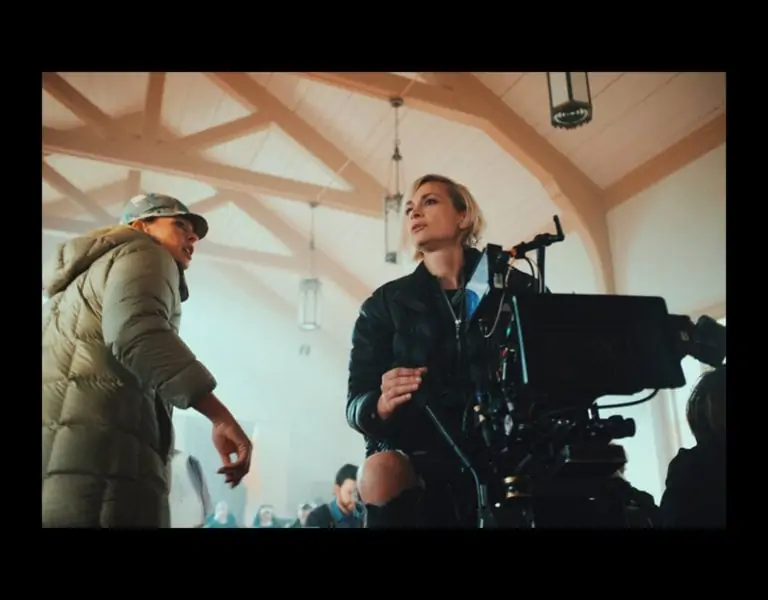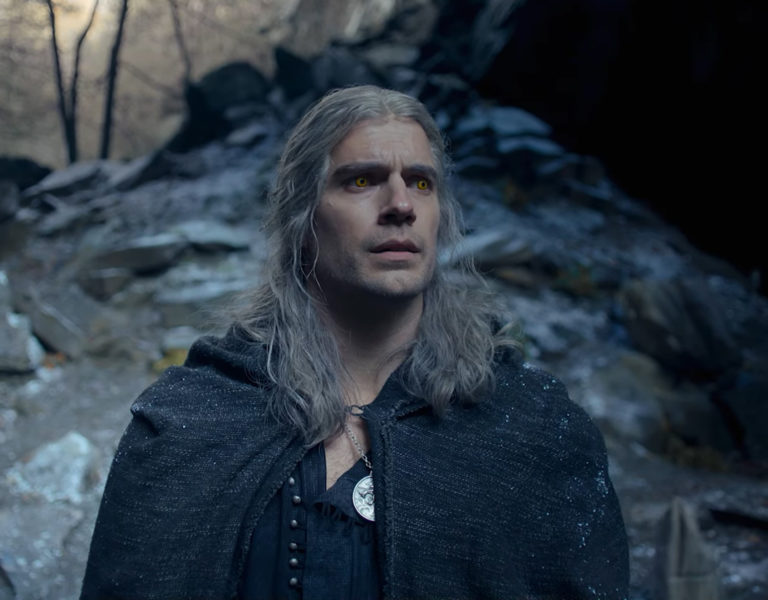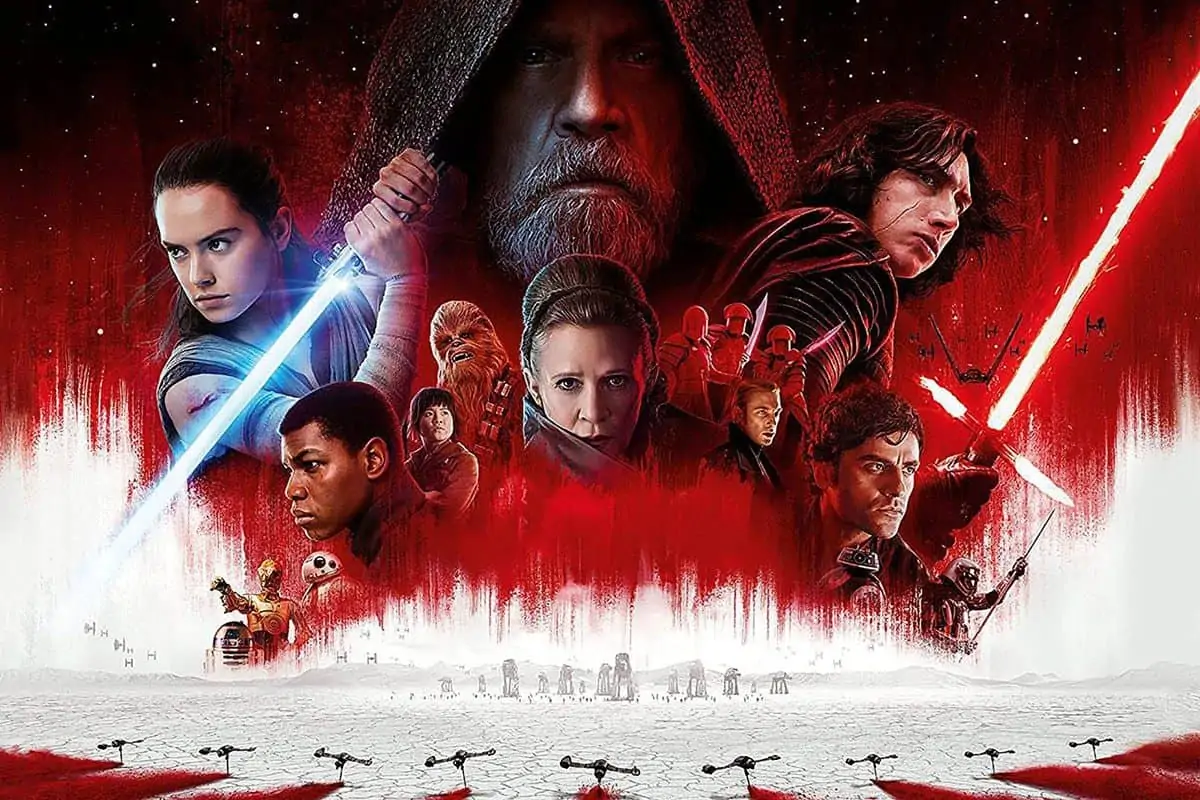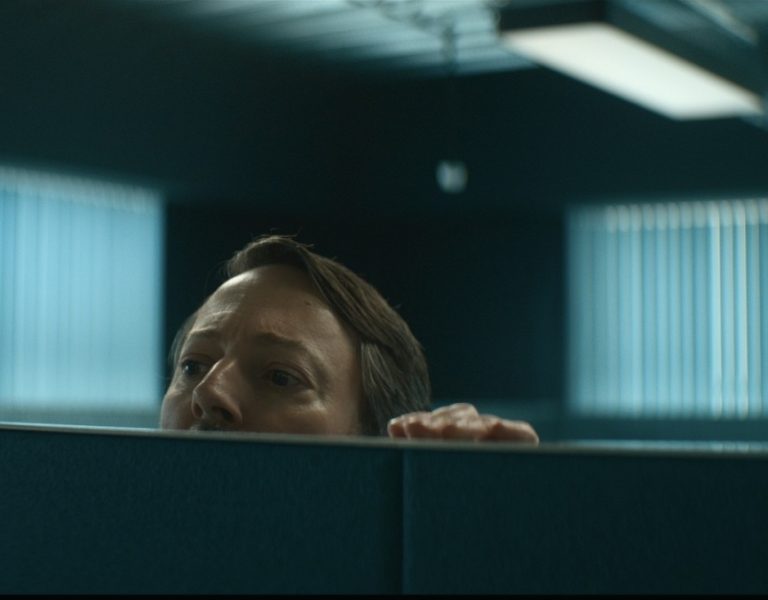French cinematographer Laurent Barès on the lure of a London shoot, his love for prep, and the challenges of bringing a complex narrative to the small screen.
Peter Capaldi and Cush Jumbo star as detectives drawn together by an anonymous phone call to right an old miscarriage of justice in Apple TV+’s pacey Criminal Record. Written by BAFTA nominee Paul Rutman, the series is lensed by Laurent Barès, whose work spans features, commercials and, of course, TV.
British Cinematographer (BC): How did you get involved with Criminal Record?
Laurent Barès (LB): My agent, Daniela Manunza (United Agents), sent me the script. I had just finished Gangs of London, a fantastic and intense show. I was looking for something a bit different, more psychological. After my initial read of the script, I immediately recognised its quality. We organised a Zoom meeting with Elaine Collins (producer), Paul Rutman (show runner) and Jim Loach (director) and had an hour-long discussion. I shared my reading of the script, my impressions, my intuitions. Shortly after, they hired me.
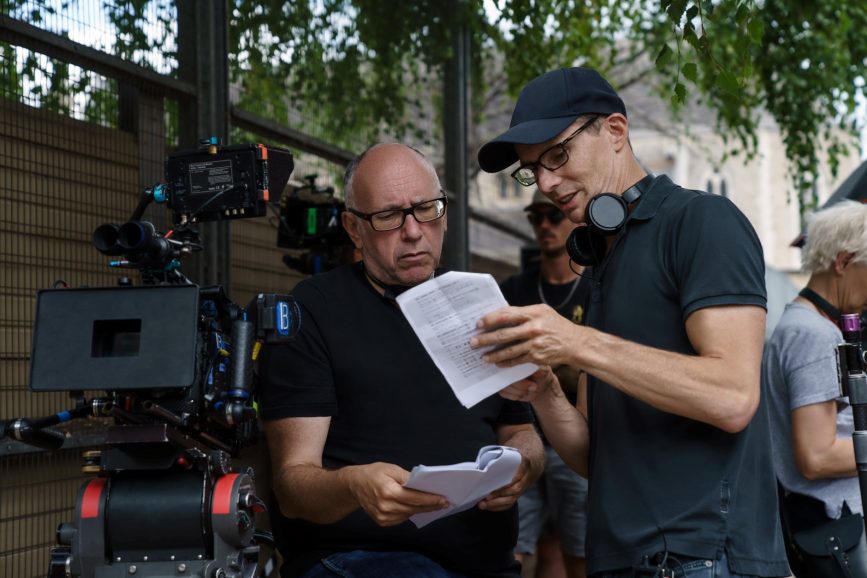
BC: What appealed to you about the story when you read the script? What made it stand out from other crime dramas/thrillers you’ve worked on?
LB: The initial readings should evoke desires, visions. A script that doesn’t spark any vision is not for me: I’m not the right person to work on it. Criminal Record‘s scripts tell a story with multiple layers, involving flashbacks, a social dimension, and substantial relationships between characters. I loved the complexity of this narrative. It’s a real challenge to convey this to the audience without them feeling lost. Too many shows today are simplistic, obvious. Life isn’t like that. Criminal Record is a good reflection of the complexity of our lives.
In the past, I shot a more traditional thriller, Crossing Lines. It was a fantastic experience. I enjoyed working on it for several months, viewing it as a long learning process. It was my first time working with Anglo-Saxon counterparts – Americans and Brits. I learned a working method that was new to me; the French don’t work that way. However, there was the frustration of creating a conventional show. Gangs of London allowed me to break free from that norm. After that, it’s challenging to return to traditional shows. I feared not finding a show of similar quality. I did Crossfire, directed by Tessa Hoffe, a very good three-part show for the BBC. An important step before Criminal Record, enabling me to engage in more sophisticated storytelling.
There’s a significant character in Criminal Record that irresistibly attracted me – London. A multicultural, immense city. I love London. I’ve been fortunate to spend several months there because of my profession. Paul Rutman and I discussed this from our early exchanges, and by working on this series, I felt I could fully express my love for this city.
BC: How long did you have for prep and what did it entail?
LB: We had 11 weeks of preparation for a 12-week shoot.
I love the preparation phase, witnessing the construction of the shoot day by day. I read and reread the script daily, noting down all the ideas these readings spark. A film is made of grand ideas and tiny details. I establish an iconography to provide references for all my collaborators, not just cinematic ones. I wanted to broaden our environment to include photography, painting, and art in general. For instance, during my research, I discovered a British photographer, Ray Knox, whose colour photos of London seemed close to the universe of Criminal Record. He captures a modest London, far from tourist spots. The light guides his graphic composition. I displayed some of his photos and other references in my office. I also take photos at each of our location scouts. The aesthetic environment eventually becomes a part of me, evolving through discussions, scouts, and the maturation of the project. The iconography enriches, and the show’s vision becomes clearer.
I collaborated constantly with the 1st AD (Guy Murray-Brown). We work on different versions of the shooting schedule, sharing my feelings to organise the shoot effectively. We don’t always have the same ideas or concerns, but it’s important to express them. He has immense responsibility, and I must help him fulfil it.
I receive constant feedback from my producers. Sue de Beauvoir was in charge of our episodes. She is involved in every decision. We met every day, and it’s her role to adjust or stimulate our work. She has always been attentive and supportive.
Preparation should serve this purpose – getting to know each other, learning to work together.
BC: Can you talk us through your testing?
LB: The screen test is a crucial moment. It’s the first time everyone comes together around a camera, a kind of rehearsal for the shoot. The most important thing for me is to see if our team functions from filming to post-production. I’m deeply committed to creating diverse teams, mixing youth and experience. Dan Goodall, whom I knew as best boy on Gangs of London, was doing his first major show as a gaffer. David Rankin, introduced by the production, is an experienced key grip. They collaborated excellently.
The camera team came from Gangs of London – Dan Henderson, Ben Banayo, Liam Meredith, Caï Stephens, and Jeremy Fusco. Jeremy was first AC on Gangs of London. I asked him to operate the A-camera. We’ve been working together for a few years. It’s important to me that everyone steps out of their comfort zone, including myself. Vincenzo Onorato was our DIT.
The first truth the tests reveal: Does the team work well? If there’s an issue, I see it immediately.
The tests allow me to work on the photogenic qualities of the main actors. Criminal Record has many scenes with confrontation between Peter Capaldi and Cush Jumbo. Each time, I seek the best lighting for the actors. And when they’re together, the best compromise to satisfy both. It’s crucial. I want the actors to feel confident and happy to come to the set. Explaining, establishing work protocols in which they feel comfortable. So, we worked on lighting directions, colour, contrast, and diffusion. Simultaneously, I tested various diffusion filters on the camera. It’s about finding the right combination. A perfect diffusion for skin texture may be challenging when there are powerful backlights. Tests accumulate this information to avoid mistakes on set. Time during shooting is costly. It’s my responsibility not to squander it and give the director maximum time for their direction.
Knowing the main sets allows me to select different lighting systems and test them. A small set doesn’t allow for large sources. Windows, ceiling height, wall colour, etc. Every choice is a compromise. We must consider image quality, ease of use, mobility, etc. Considering all these parameters, we choose the appropriate equipment for the best possible result.
These tests are invaluable in choosing focal lengths and determining the camera height. I like to place the camera slightly below the actors’ eyes during shot/reverse-shot. It amplifies the radiance of the gaze, but some faces don’t accept it. These tests immediately show that.
We also film silhouettes, costumes, the demeanour of each character.
After these tests, I write a report and share it with my key collaborators. If necessary, we modify what we had planned. Finally, we are ready for shooting.
BC: Run us briefly through the locations. How involved in scouting were you?
LB: Everything in front of the camera requires great attention. Sets are crucial for storytelling; they must tell the story or closely relate to it. They also need to be practical. If shooting in a set takes too much time, it reduces the time dedicated to filming and consequently diminishes the film’s quality.
Criminal Record was filmed on location and in the studio. From the beginning of the preparation, we decided to showcase London but a different London, far from tourist spots. It was important for us to choose locations that, in some way, offered a perspective on the city. For instance, during the lengthy discussion between Hegarty (Peter Capaldi) and DS Cardwell (Shaun Dooley), we placed them in a bar with large windows. Behind them, you constantly feel the hustle and bustle of the street, adding an extra dimension to their conversation.
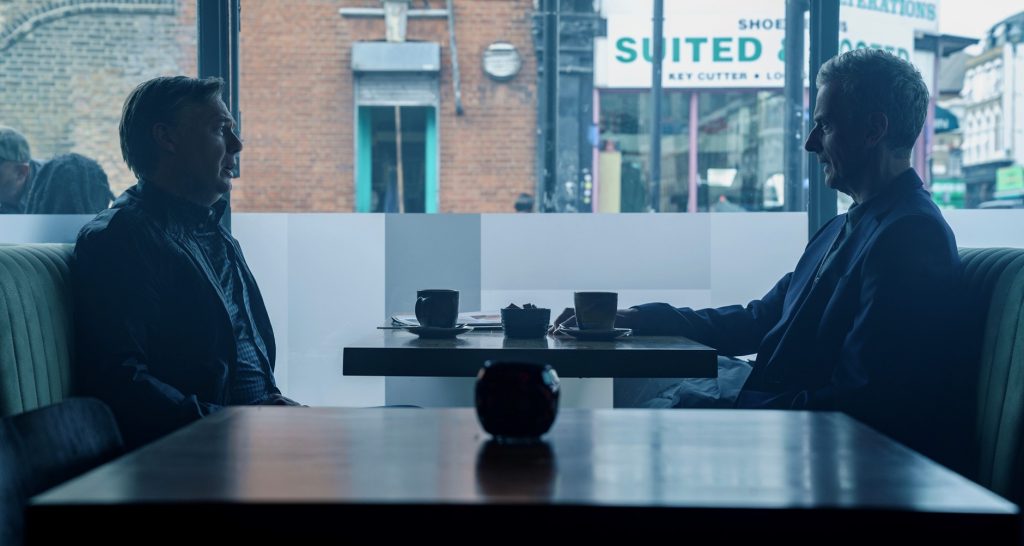
When DS Lenker (Cush Jumbo) talks with a phone seller, Hasad (Sia Alipour), we moved his stand a metre onto the pavement. This way, for the two-shot, you can see the perspective of Kingsland Road.

As soon as Matt Lane, our location manager, found the main filming locations, I spent hours on my weekends revisiting them, finding the best angles and optimal lighting times, defining the characters’ movements, and telling the story. These are moments of solitude that I cherish. I love London (I think I’ve already mentioned that!). Of course, I can only make suggestions, and my discoveries must receive approval from the director and producers. But these moments of solitary introspection help me a lot in conceptualising the entire project.
For the design of studio sets, I had the opportunity to collaborate with Matthew Button and Daniela Faggio. They reconstructed the apartment where the defenestration takes place, the corridor leading to the elevator, and the elevator itself. We reused it for the flashback of Patrick Burrows’ kidnapping.
Paradoxically, we conducted location scouts. With a desire for realism, we visited some apartments and drew inspiration from them. For example, the pillar in the middle of the living room, which seems incongruous, is one of the results of this scouting. We barely oversized the spaces. Again, realism matters. The viewer should never doubt that the apartment belongs to the tower they just saw a few seconds ago.
BC: What camera and lenses did you use and why?
LB: The Alexa Mini LF paired with Zeiss Supremes FF. I enjoy working with the Alexa; ARRI has a long tradition in camera manufacturing. When film cameras transitioned to digital, new manufacturers entered the market, but their technologically advanced cameras were often ill-suited for shooting and framing, especially concerning accessories. ARRI led this revolution on both fronts. The Mini LF is manageable, ergonomic, and compact – an advantage for our shoot.
The Zeiss Supremes FF are fantastic lenses. I’m uncompromising when it comes to optics; each lens has its visual identity, and it’s crucial not to make a mistake when choosing. The Supremes were non-negotiable. They were not negotiated by 24-7, the rental house, or David Wade, our line producer. Thanks for that!

BC: What was your approach to camera movement to aid the visual storytelling?
LB: Criminal Record narrates an investigation led by DS Lenker (Cush Jumbo). Filming an investigation is capturing a thought in motion. In every investigation, there is progress, mistakes, setbacks, dead-ends, and successes – all of which evoke camera movements. The text propels us forward. The approach shouldn’t be illustrative but attentive. I didn’t want a systematic camera approach, like opening a scene with a wide shot and a forward tracking shot, shot/reverse-shot during dialogue, and a few inserts for editing convenience. When you do that, it feels like you’re not telling a story but shopping for the edit. It’s not creative; it’s purely technical. Paul Rutman’s text deserved much better. It alternates action and investigation scenes with their consequences on the characters’ daily lives. There was no way to film them the same way. There are also many camera movements in introspective scenes – slow tracking shots accompanying the characters’ contemplation. It creates an immediate intimacy between the viewer and the characters, fostering a connection to their quest. Filming this requires a lot of sensitivity. There’s no replicable model. Each actor, each scene is different. Thanks to David Rankin (key grip) and Jeremy Fusco (operator), who successfully allowed us to enter Hegarty and Lenker’s minds!
In the heart of the second episode, June Lenker saves a family from a house fire. We decided to shoot the scene in very few shots. We traverse the neighbouring house, the garden, jump over the dividing wall, enter the burning house, go upstairs via a narrow staircase, free the hostages, and finally save the assailant from a hanging attempt – all in four shots. Handheld camera. The location was too narrow for the Steadicam. The shots are not always smooth or conventionally framed. The character partially exits the frame, then returns. These imperfections give authenticity to the action. It’s not smooth, but it’s intentional. I knew there would be incidents, and I had warned everyone. What mattered was not achieving a technical feat (although it is one!) but conveying June Lenker’s anxiety and fear, made palpable by these imperfections.
We used the Steadicam very sparingly. In the final scene of the first episode, a series climax, DS Lenker tries to save a woman threatened by her partner. She crosses a long esplanade toward the tower where the crime will occur. To accompany her in this frenzied run, we used the Steadicam and especially the talent of its operator, Michael Mensah. These are beautiful shots, where despite rapid movement, we never lose Cush’s facial expression. A climactic moment in the series.
We didn’t use crane movements much, but there’s one I particularly like. It shows Hegarty walking his dog in the street. Then the camera rises. Hegarty becomes a small figure in the vastness of London at the very end of the day. An image that resonates with the profound loneliness of this character.

BC: How did you approach the framing and composition?
LB: I detest aesthetics for the sake of aesthetics. Framing, composition, they only exist if they tell the story. This doesn’t exclude elegance and beauty, but there must be an alignment. Each project dictates its own aesthetics. After a few days of shooting, you notice the regular use of the same focal lengths. The show imposes its choices, and they must be respected. Avoid the temptation to change everything just to be original; you risk going off course. I keep an eye on the second units. I don’t want a Terry Gilliam shot in the middle of a Michael Mann film, or vice versa. Each in its own style. What matters is the coherence from the first to the last shot.
One of the challenges of Criminal Record is to realistically portray working-class neighbourhoods. I dislike miserablism. We strived to maintain a balance between reality and poetry. I drew inspiration from Don McCullin’s photos in Liverpool in the late ‘60s – beautiful, realistic, moving, and respectful. The framing is slightly distanced enough to understand where we are but not so much as to ignore the drama of those who live there.
BC: What was your general approach to lighting?
LB: Explaining light is always challenging. It’s a discipline that blends technique, sensitivity, and instinct. While each can be understood separately, the combination is quite complex. With Dan Goodall, my gaffer, we plan each shooting day – making diagrams, visiting sets, and establishing equipment lists for each location. Then comes the shooting day, and we implement what was decided. After rehearsals with actors on set and framing choices, I take a few minutes to reflect before we start filming. Based on what I’ve just seen, without disrupting all the work done, I request some quick but essential modifications. Dan humorously calls it the “organic light,” typical British irony. He’s right. Freezing a system days in advance, without considering the present, chills me. Light must live and breathe with the actors and the staging. When it’s too rigid, the show suffers significantly. Experience allows me this little freedom. One shouldn’t believe they’re almighty; every forecast is contradicted by reality. Flexibility is crucial to adapting to changes without betraying the quality of one’s work.
Similarly, in the studio, a place theoretically 100% controllable, I maintain an element of randomness. It’s strange to see characters coming from the chaos of the street arriving in a place where suddenly everything is perfect. It destroys the credibility of the narrative. My job often involves erasing the flaws from the outside and creating them in the studio. What a paradox!
A shot doesn’t exist without the one before or after it. I always keep in mind the continuity of scenes. For example, the end of episode 2 involves a parallel edit of four night-time scenes – a street, a law office, a supermarket parking lot, and the interior of a car. Four different worlds that must come together as they redirect the investigation towards the truth. I chose an orange hue for all four scenes but with different tones to identify each location. The law office and the final shot revealing Carla, a key figure in the story, were intentionally shot in the studio. I deliberately overexposed a lamp and slightly immersed Carla in darkness to prevent visual perfection from hindering the editing process.

BC: Who did the grade and what did you want to get out of it?
LB: Colour grading is a serene moment. Safely tucked away in the laboratory’s calm, you get the pleasure of discovering the final cut of the episodes. However, sometimes there are surprises that can give you cold sweats, like a scene shot during the day becoming an evening scene for narrative reasons.
Colour grading is not about recreating; it’s not about changing the visual universe but rather executing, in the minutest details, the work done by my entire team on set. In any case, when directors, producers, and broadcasters have watched dozens of work copies in the editing room, they’ve become attached to the visual result. If you change it dramatically, you open a source of conflict. It’s better for you if the rushes are close to the final result you desire. Hence, the importance of collaboration with your DIT. Vincenzo Onorato was very respectful of my requests, allowing us to deliver a remarkably coherent work copy.
Andrew Daniels graded Criminal Record. I met him during the screen tests. Meeting your colourist is a crucial moment in the artistic process. They will accomplish (or not!) your work. London has talented colourists, and Andrew is one of the best. Grading is a dialogue. When your colourist understands your aspirations, you should consider their suggestions. Visual continuity is not that difficult to achieve. What matters is the impact of grading on storytelling. The dialogue with Andrew was very beneficial. Gradually, we balanced the film, smoothed its continuity. Grading is a living material. It evolves as you work. After one or two days, you find exactly what you want and then go back to the beginning to homogenise everything. I have fond memories of intense yet never stressful, always positive work.
Memories from the shoot help me explain what I want. Weather conditions, the sun’s course, etc. I always remind my colourist of the shooting conditions. I don’t understand why sometimes DPs are asked to work on grading remotely via video from their homes. Physical presence seems indispensable for optimal work completion. Thanks to my producers for respecting that.
BC: What part of your work on Criminal Record are you most proud of?
LB: For a long time, actors intimidated me. When I started as a 2nd AC, I couldn’t bring myself to look at them. Fortunately, that changed over time. It was evident that working with the actors would be crucial for the success of Criminal Record. I can’t imagine camera work without close collaboration with them. It’s intimately tied to their performance. Before each shoot, I like to have a brief discussion with the main actors. I try to understand their working method. Some have no specific requests, while others want space and not to feel constrained by technical aspects. These discussions and observing the initial rehearsals help organise the set and shooting days.
I admire British actors – a true national treasure. Their discipline, dedication, and respect for the team are remarkable. I come from a country where this is not always the case. Cush and Peter immediately granted me their trust. On set, I attend most of their discussions with Jim, our director, taking a step back. Unless prompted, I don’t need to participate, just listen. Actors share their vision of the story, juxtaposing it with the director’s. This dialogue shapes the storytelling and is composed of details – movements in a room, the use of a prop, the rhythm of speech, or the inversion of two lines. These are elements I must understand and capture on camera.

BC: Is there anyone not yet mentioned that you’d like to give a shout-out to?
LB: I’d like to express my gratitude to the producers at Apple TV, Jay Hunt and Joe Oppenheimer. They’ve consistently supported us, asking the right questions and encouraging our initiatives.
I wouldn’t have made Criminal Record without Elaine Collins or Paul Rutman. Thank you a thousand times.
Finally, I want to mention Jack Fenton and Travis Carroll. They were our camera interns and worked for the first time on such a lengthy project. They were attentive, hardworking, and, I hope, happy.
Criminal Record is available to watch now on Apple TV+.
